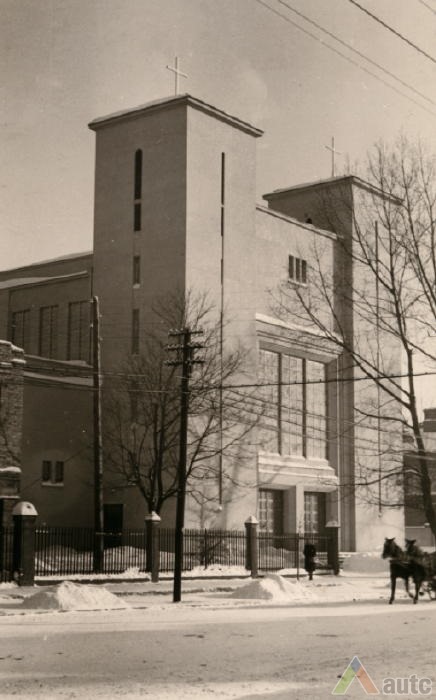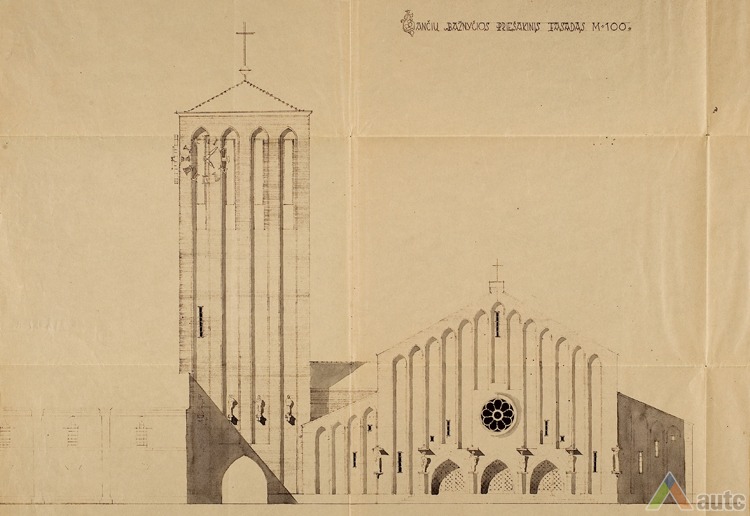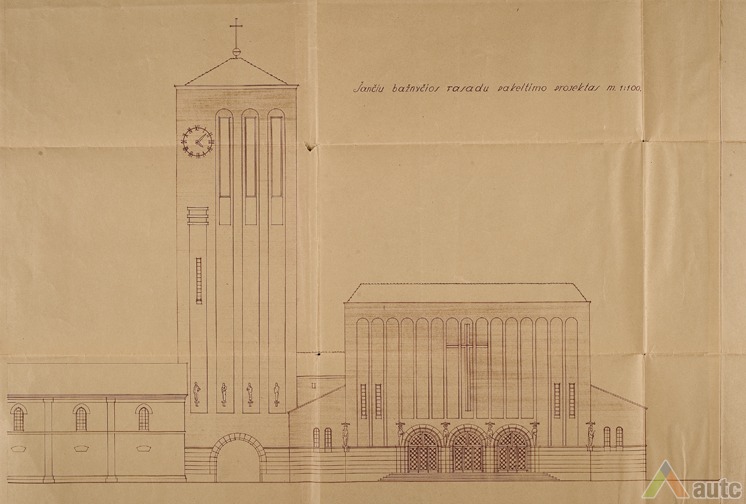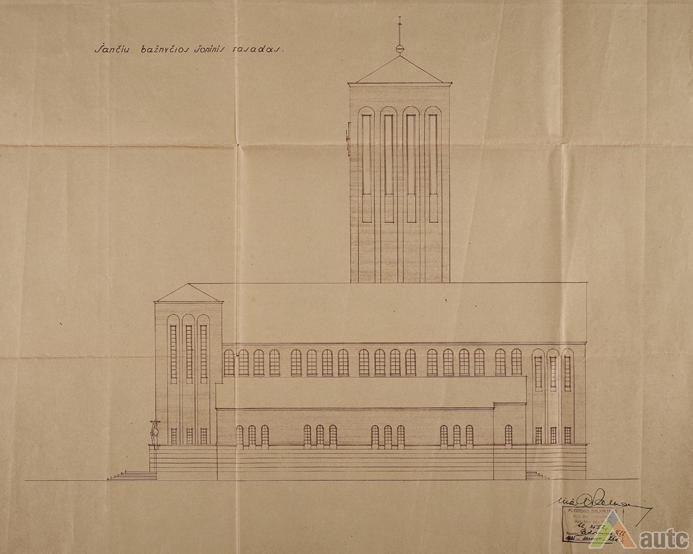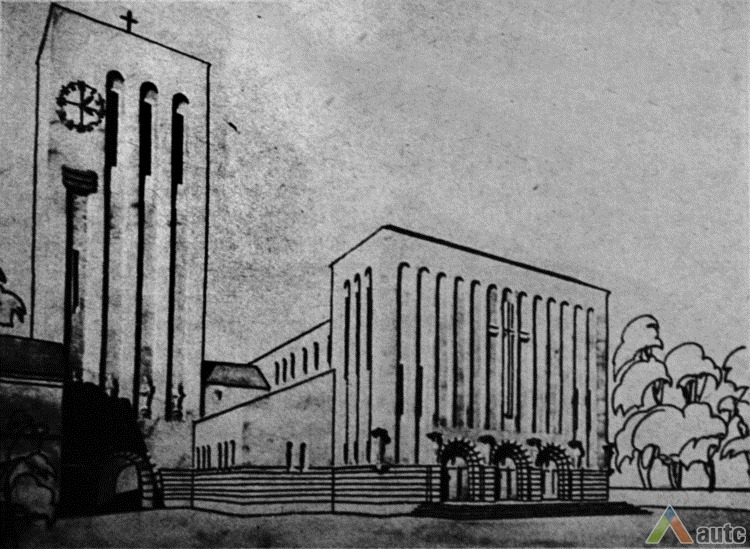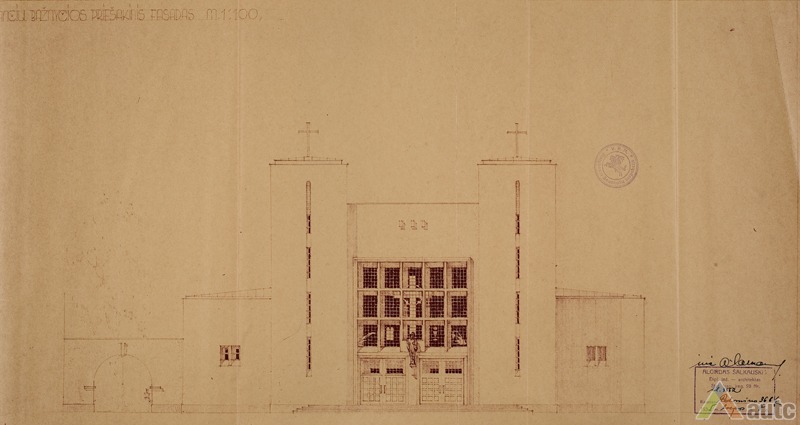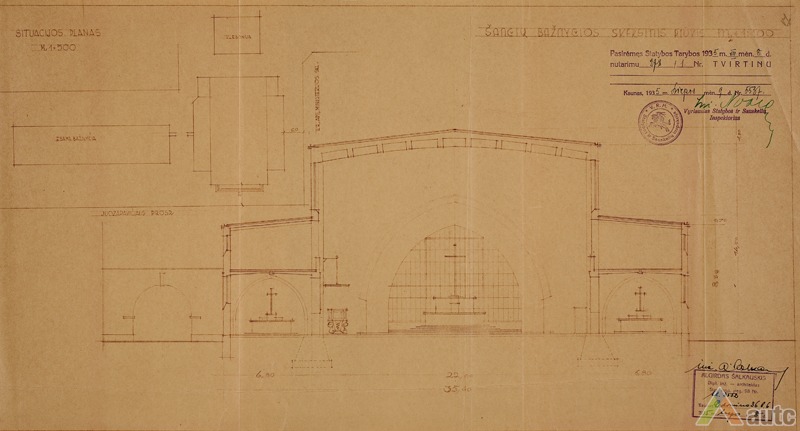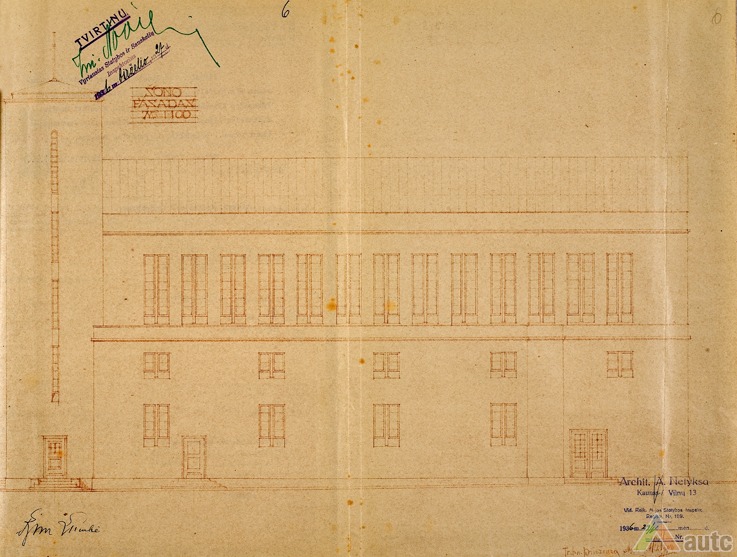

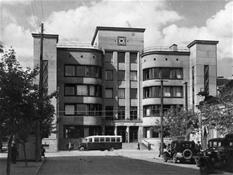
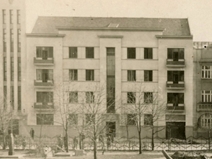

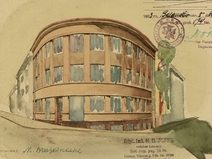



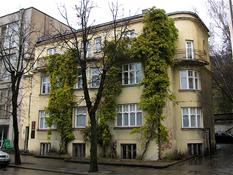
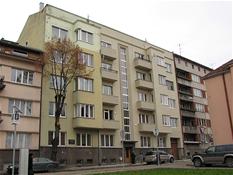

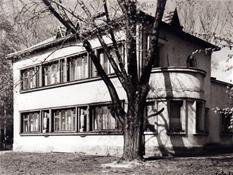

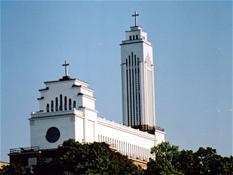
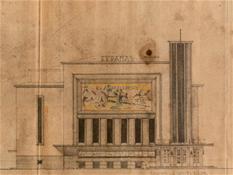
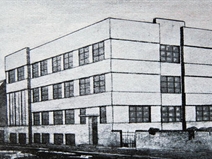
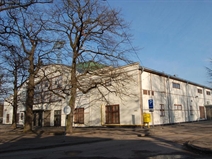


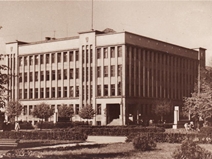
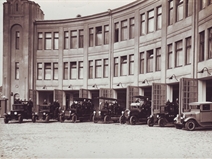
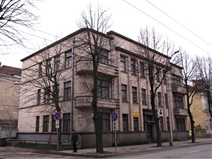
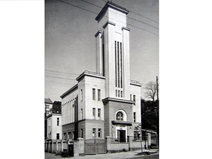
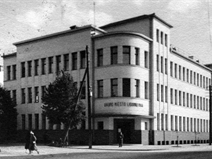
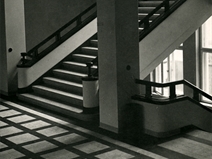
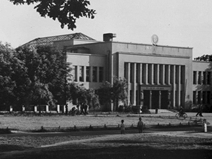

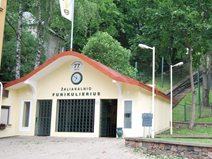
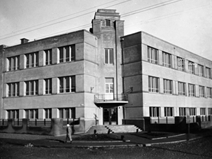

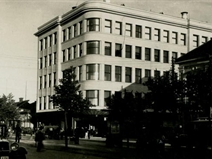
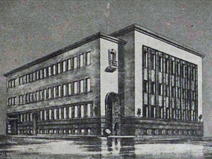
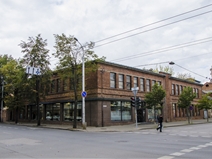
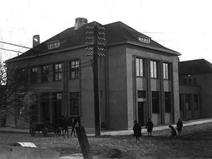
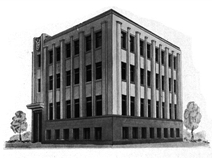
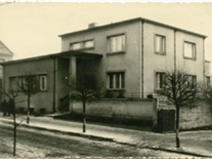
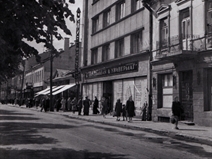
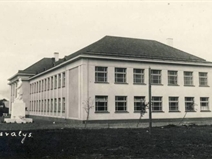
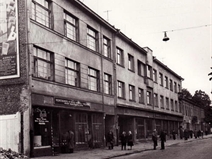
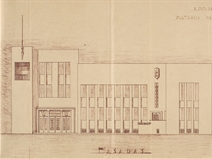

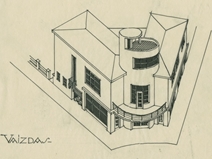
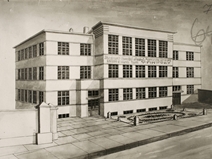
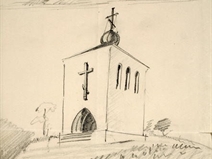
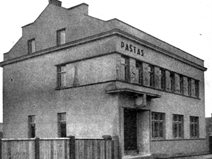
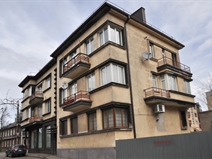
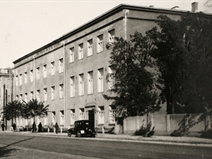
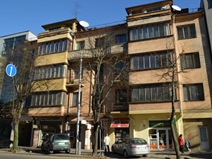
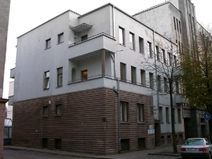

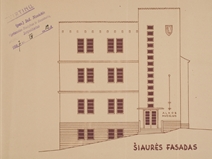
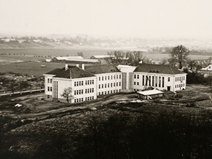

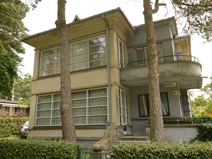

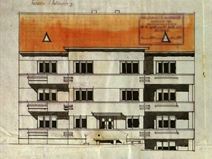


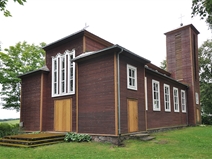


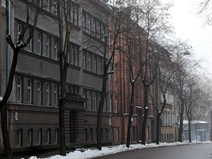

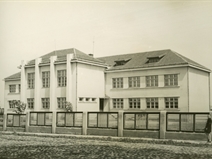
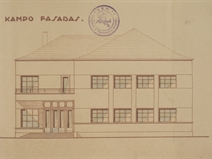
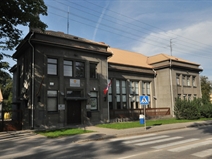
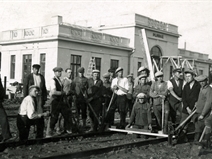


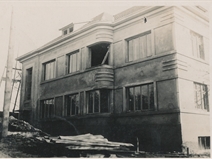
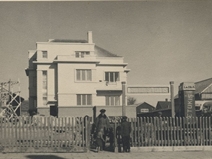
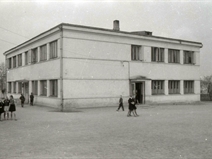

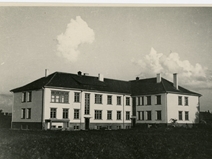
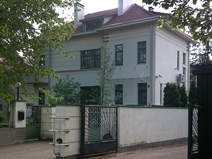
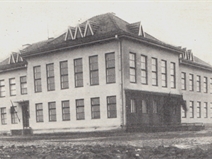
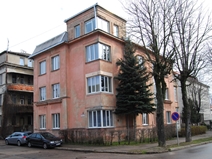
Church of the Most Sacred Heart of Jesus in Šančiai is a characteristic example of modern sacred architecture. Modernist churches were not a very common phenomenon in the First Republic which is why the church in Šančiai is an interesting and valuable object for Lithuanian sacred heritage.
During the interwar period Šančiai was a densely populated town in the suburbs of the temporary capital (according to the numbers provided in the press of that time, in 1931 Šančiai had a population of 25,000 which was then equal to that of Šiauliai), yet requests for a Catholic house of worship bothered it ever since the beginning of the XX century. It is known that Šančiai priest would say Mass in a small chapel at parish’s cemetery which was not suited to fit in all visitors. Attempts to improve the situation included setting up the house of worship in a rearranged military storehouse at Kaunas fortress following WWI.
Construction of the new house of prayer was initiated by then pastor of Šančiai parish Mamertas Lumbė. Design works took around four years to complete. In 1935 a draft was submitted for approval, prepared by architect Algirdas Šalkauskas. Although he did not finish the works and the design of the building was passed over to architect Adolfas Netyksa who provided a slightly adjusted draft for the church in 1936. The construction of the church was completed and the object was consecrated in 1938.
The building has a rectangular layout and two low towers which emphasise the central facade. Two identical sacristies on both sides highlight the massive size and minimalistic exterior decorations of the building. Facades of the church are characterised by a composition of regular geometric shapes: square front doors clash with narrow, rectangular windows set out in a vertical fashion. The interior is spiced up by a fresco “Angels” by painter Liudas Truikis on the presbytery arch, as well as stained glass windows by Stasys Ušinskis installed during the interwar period.
The exterior of the building and its size seamlessly blended in with the urban landscape of Šančiai town, which was the hub of industrial objects, technology infrastructure, and military barracks. Modern architectural forms and techniques emphasised building’s aesthetics by accentuating its materiality: the construction of the church used a modern technology for designing reinforced concrete structures. The roof of the church was one of the first examples of thin-walled reinforced concrete shell structures in interwar Lithuania. Estimates and maintenance of works was provided by engineer Pranas Markūnas – one of the pioneers of technology in Lithuania.
Kristina Endriukaitytė
